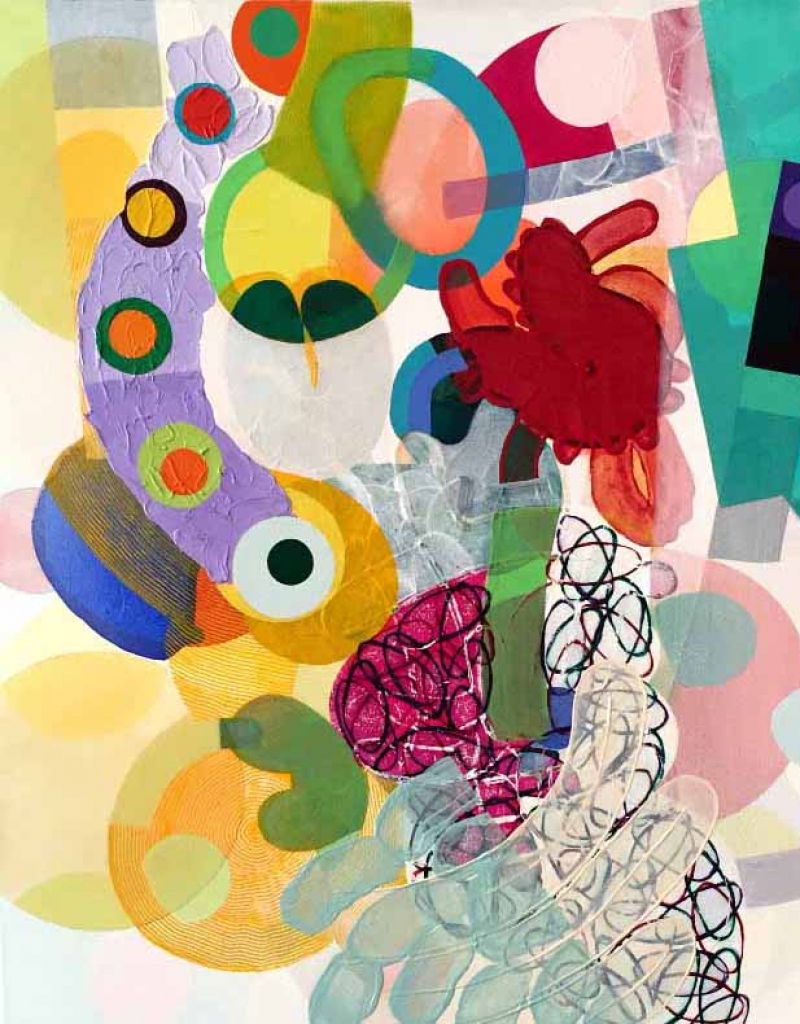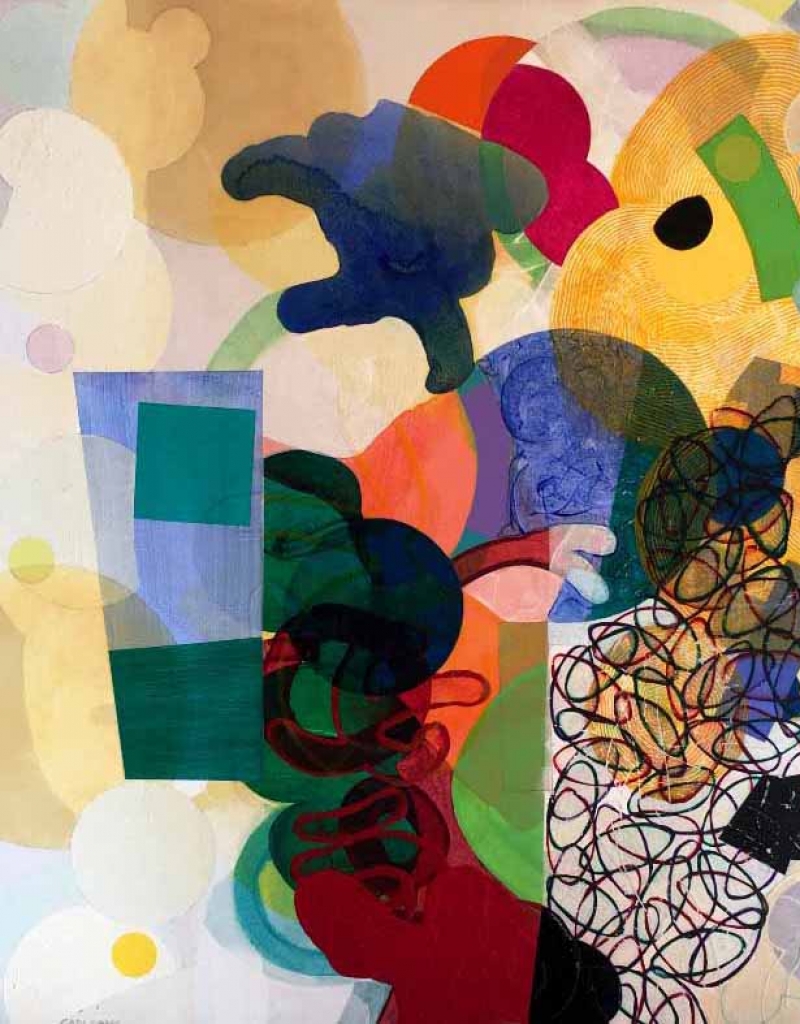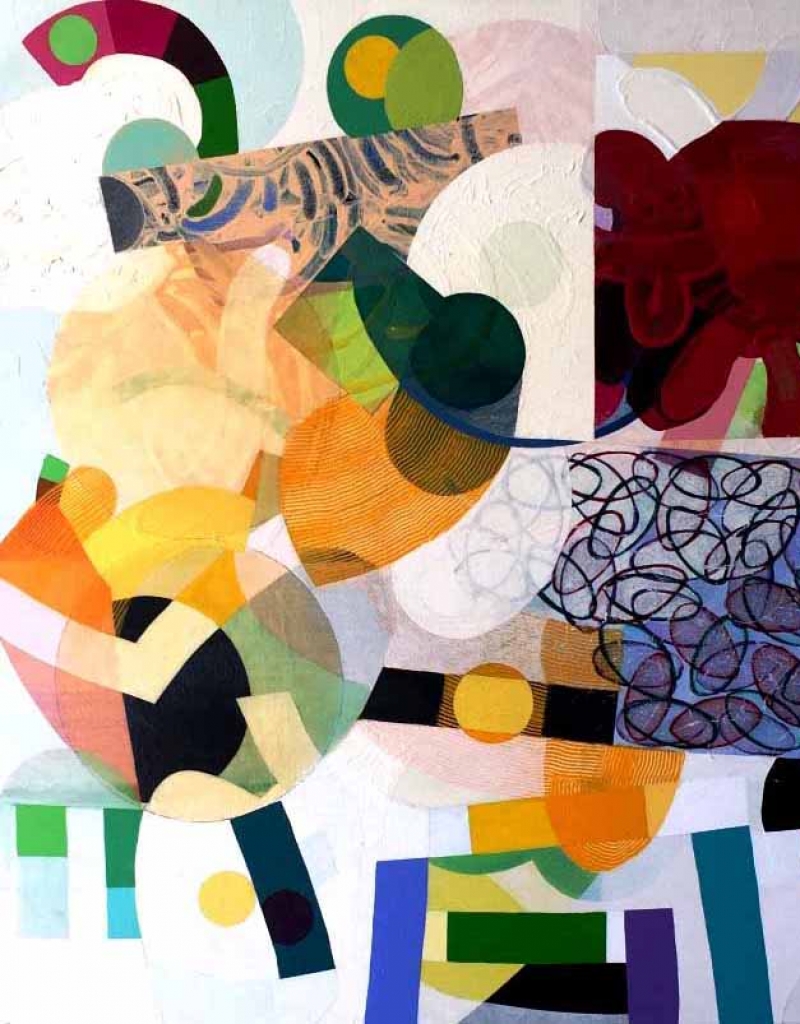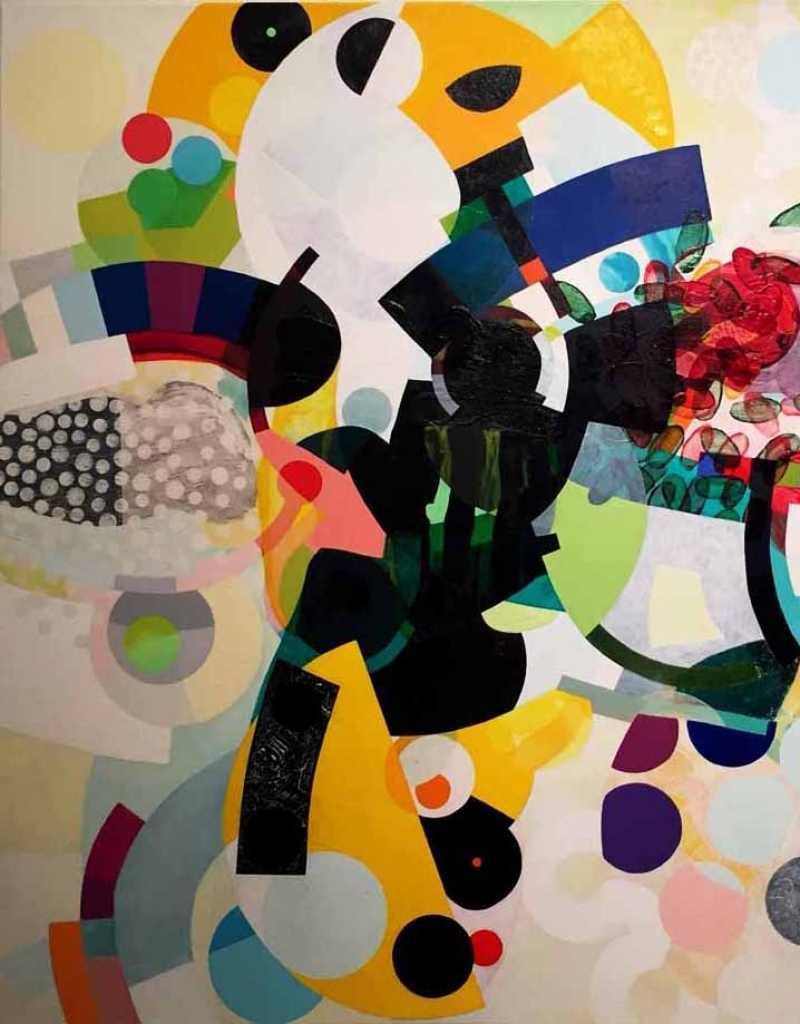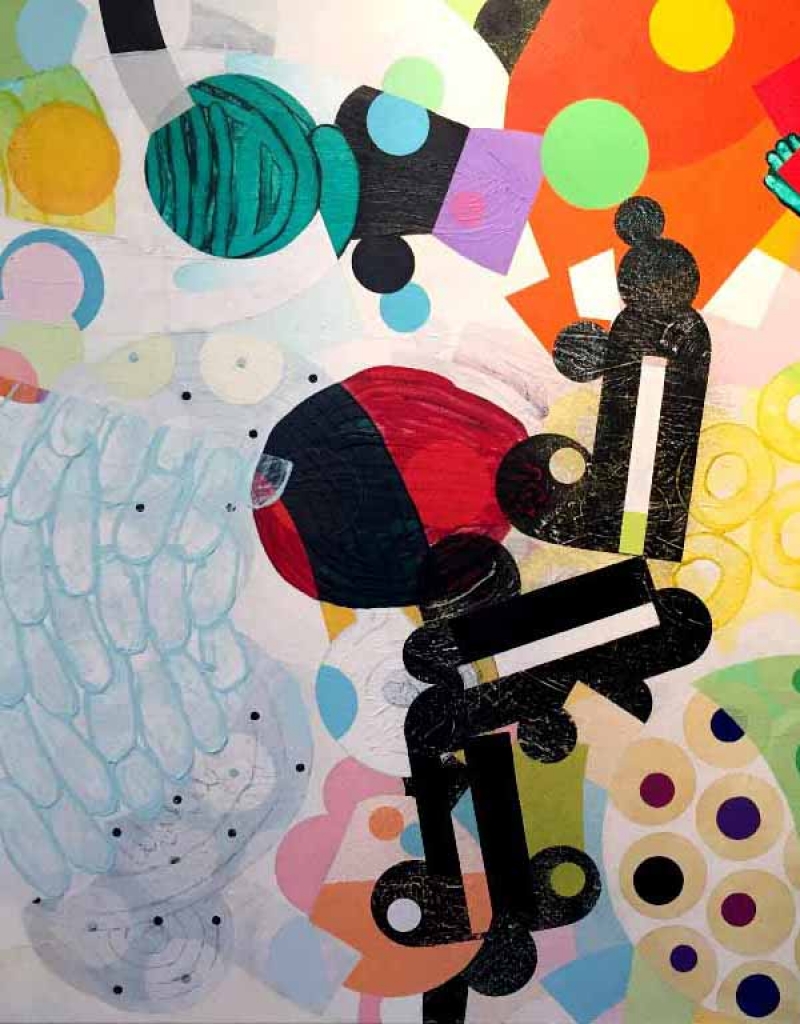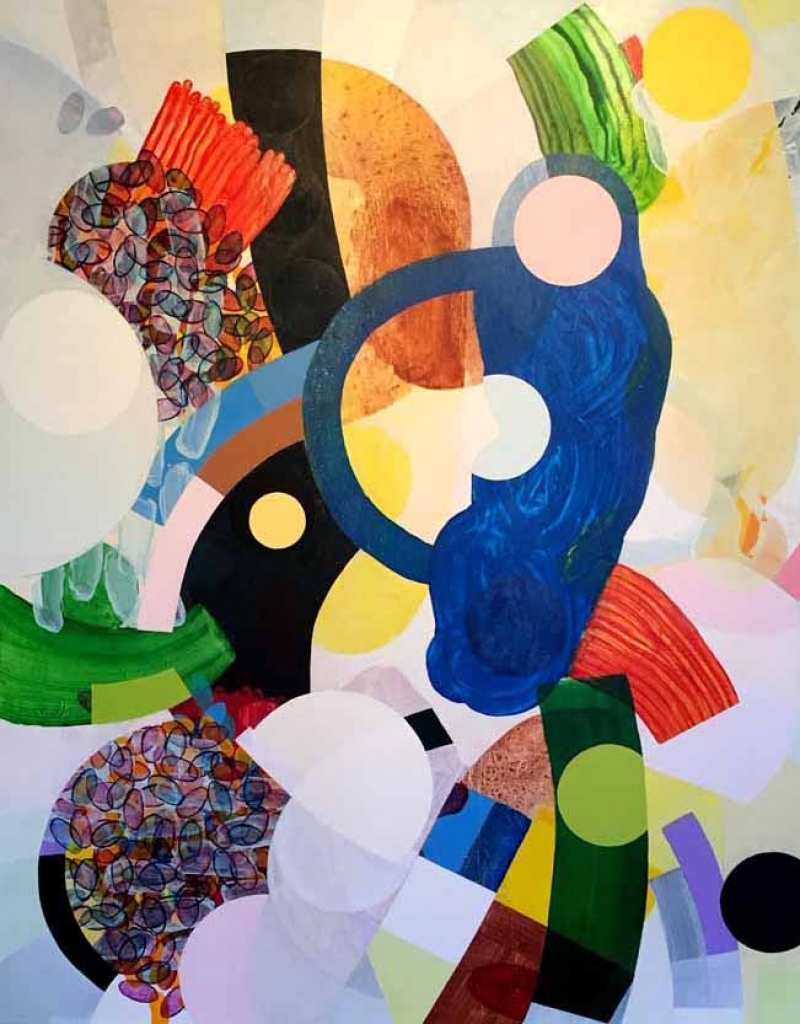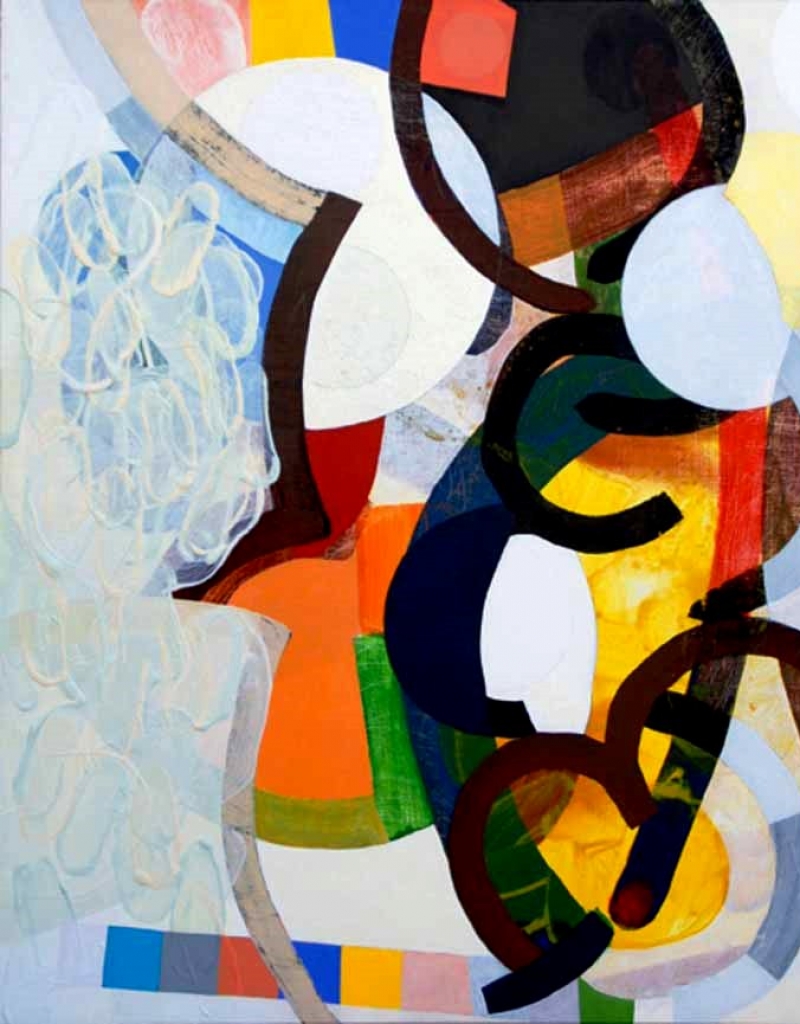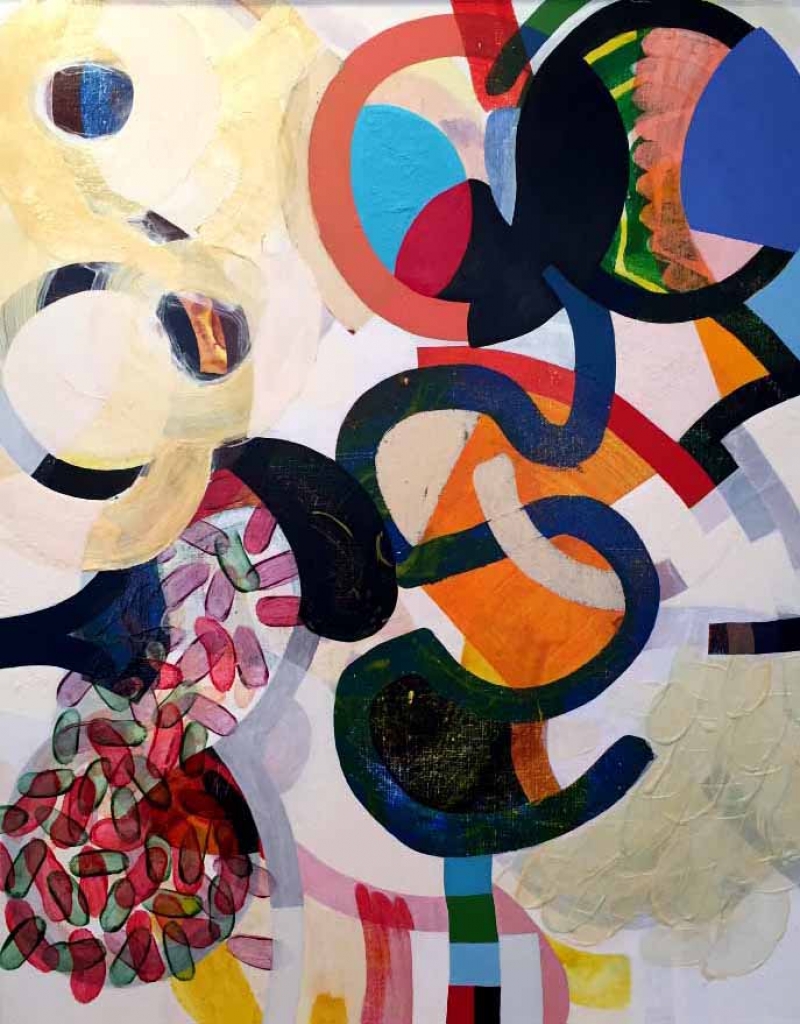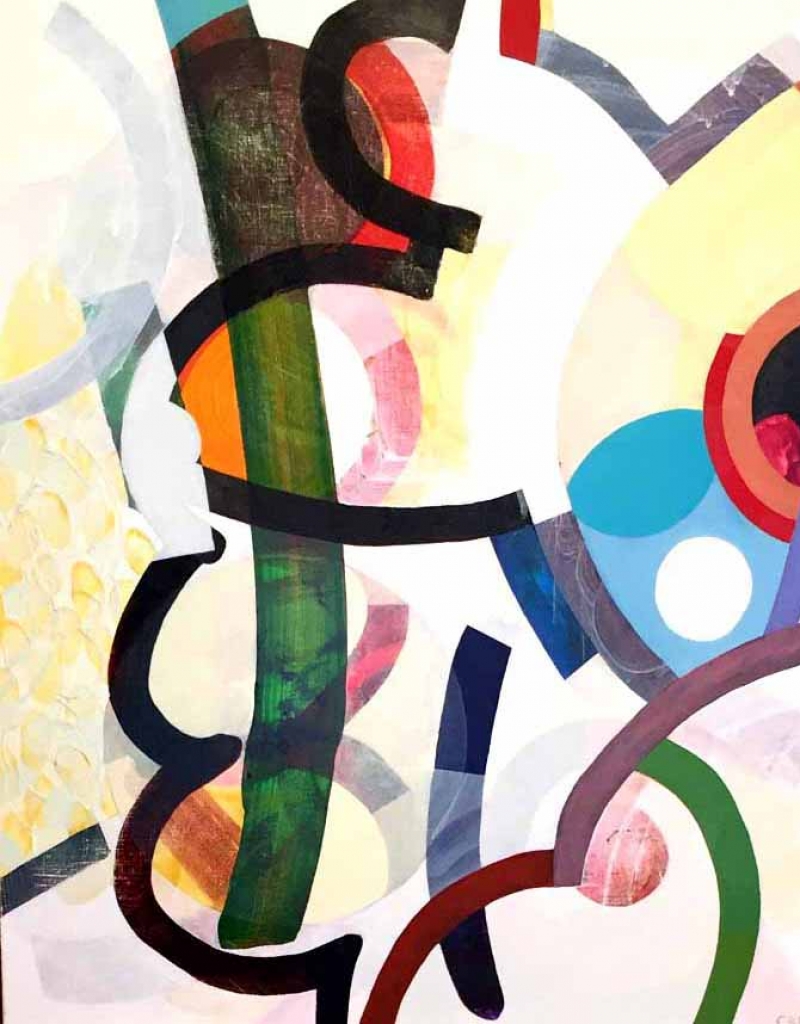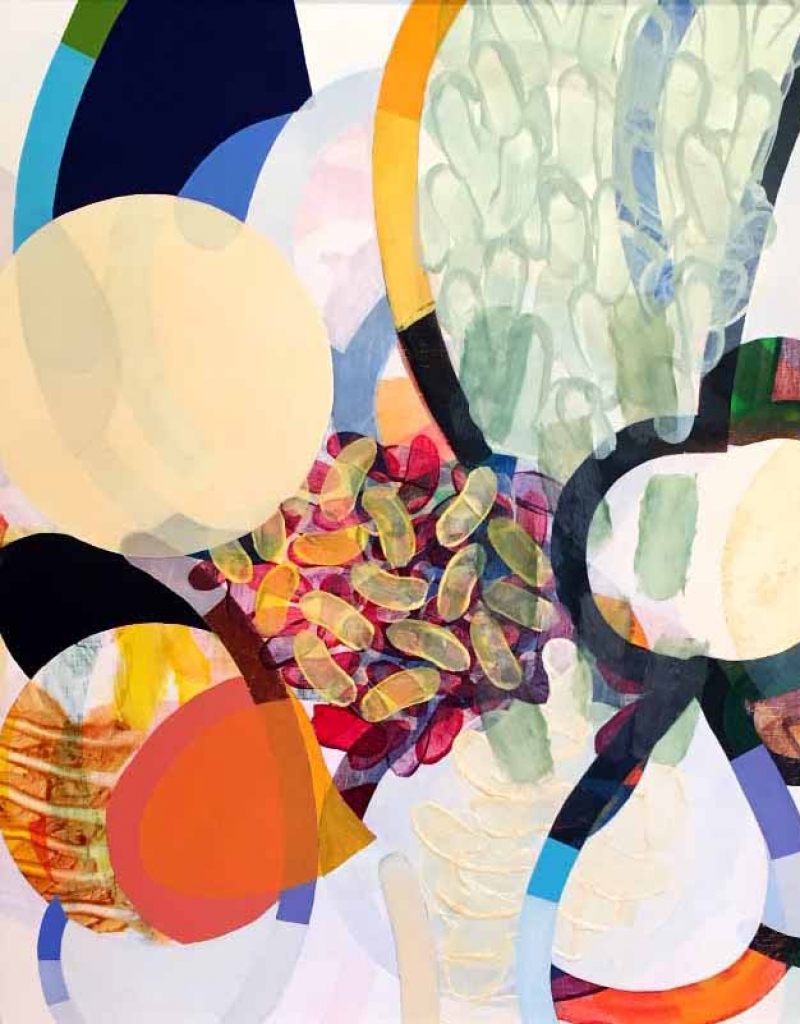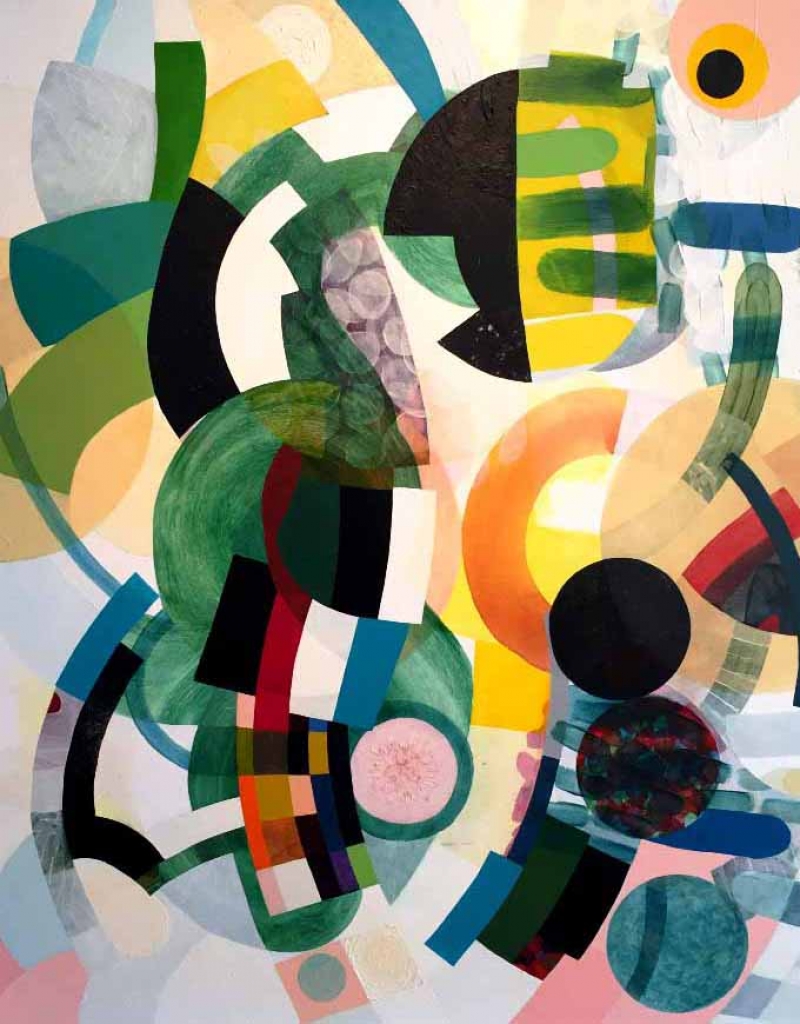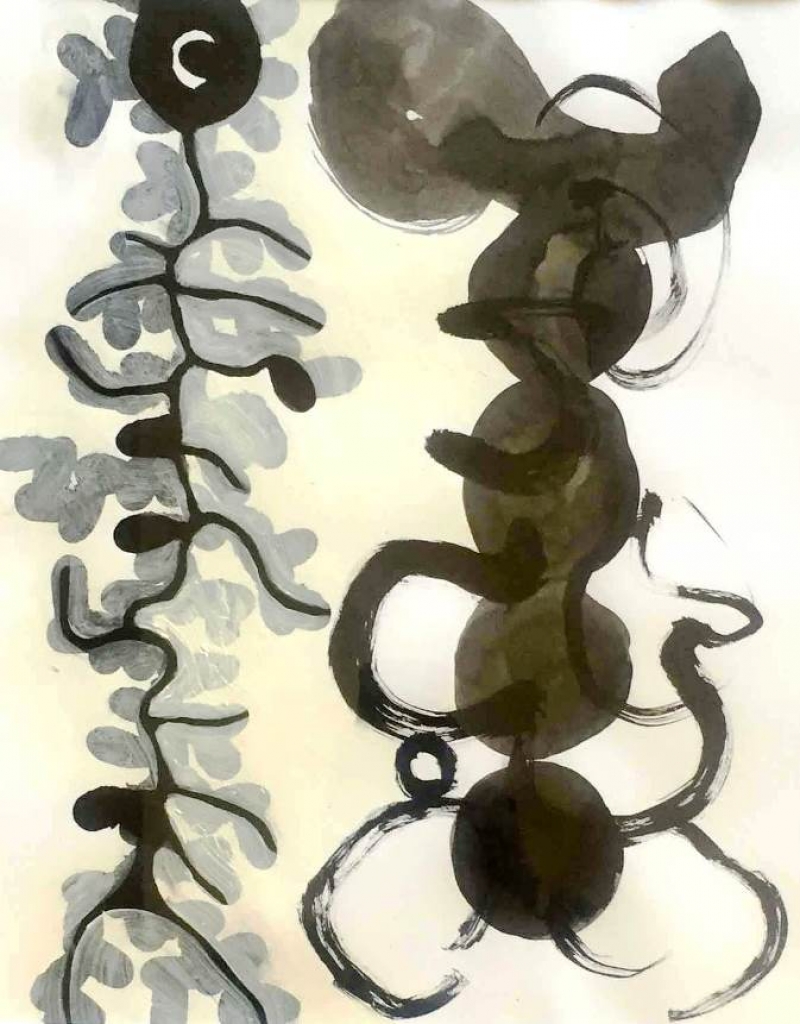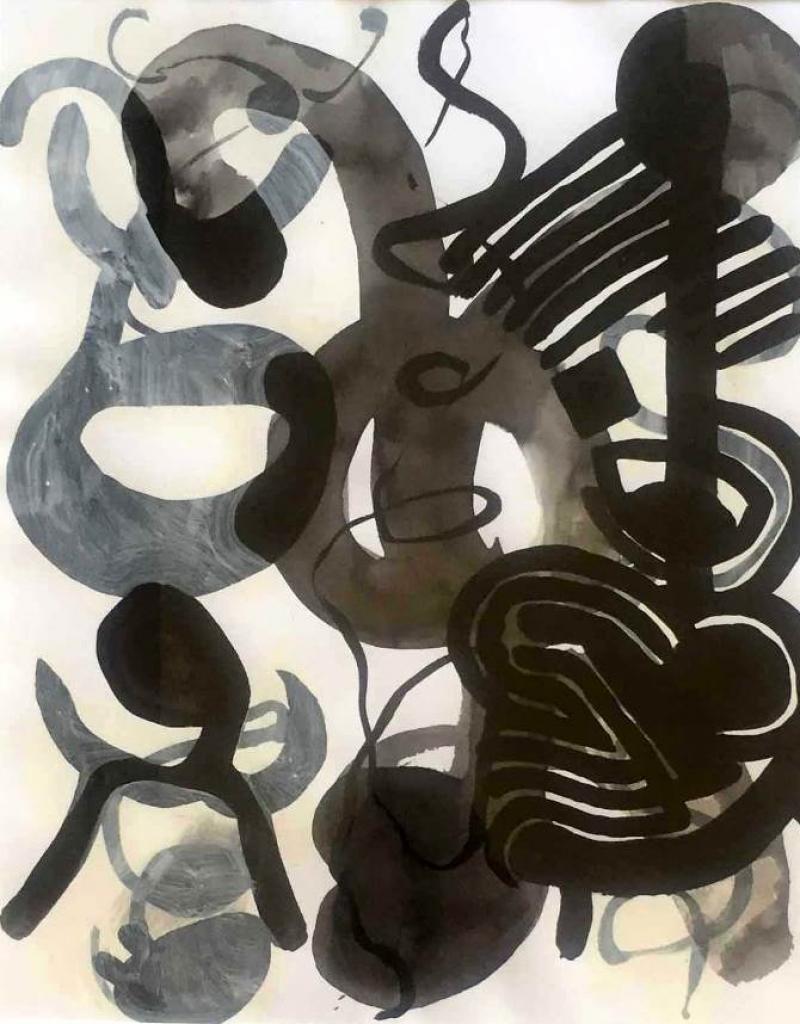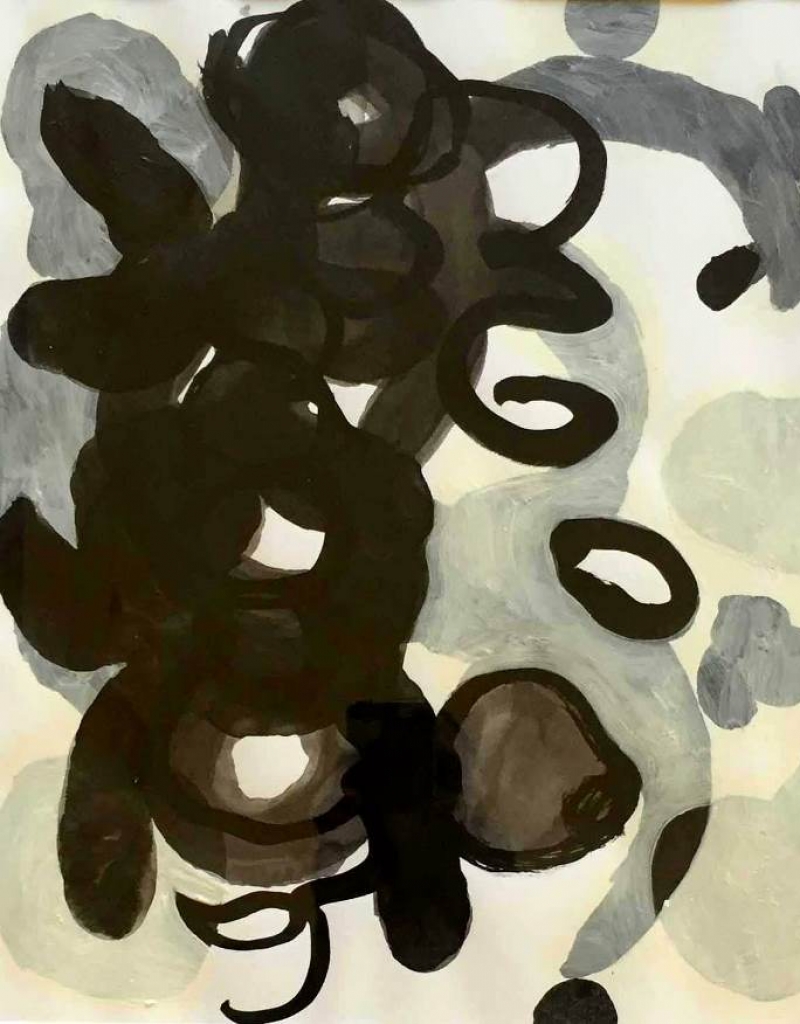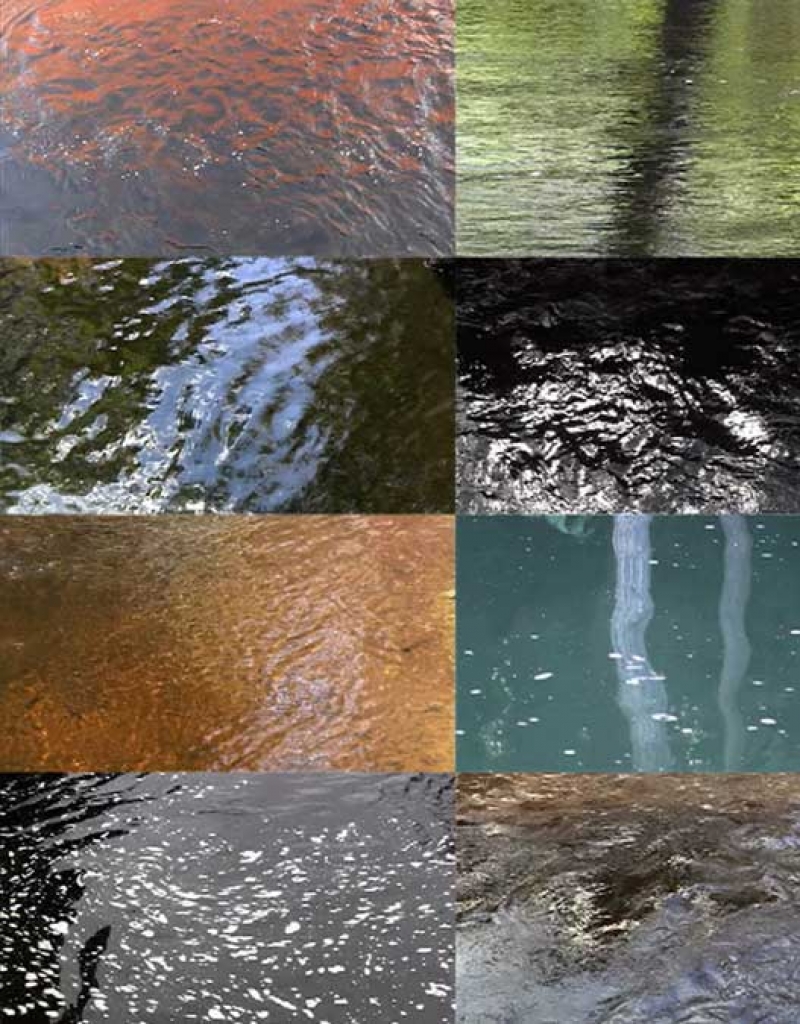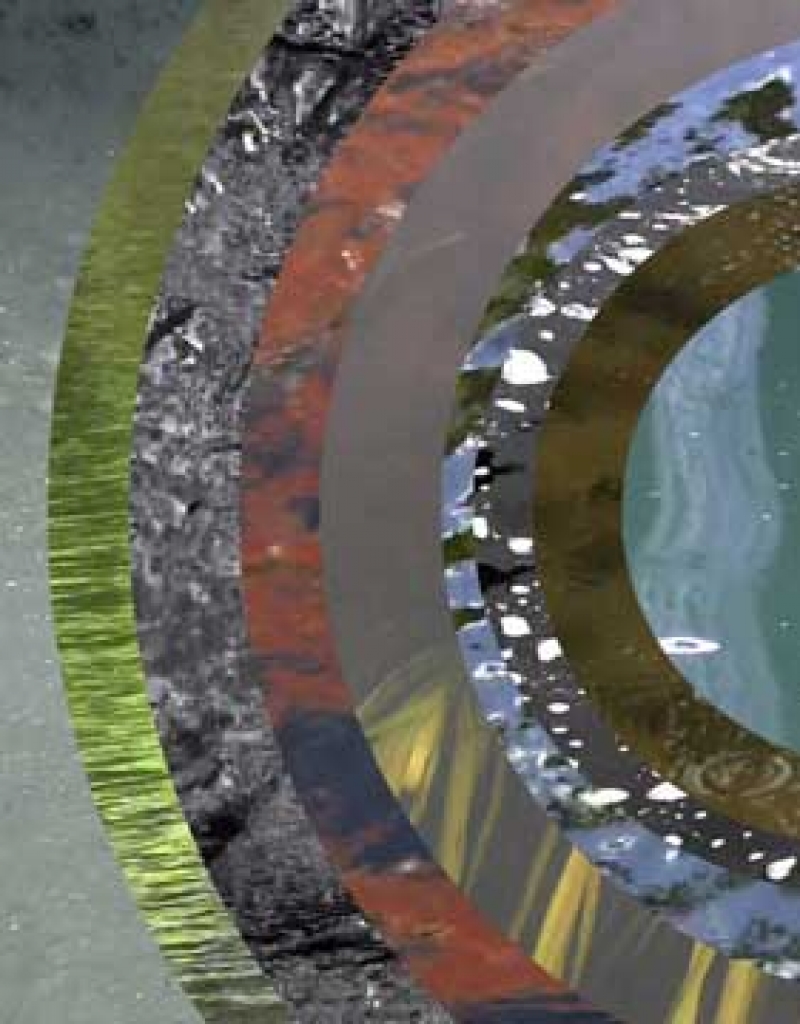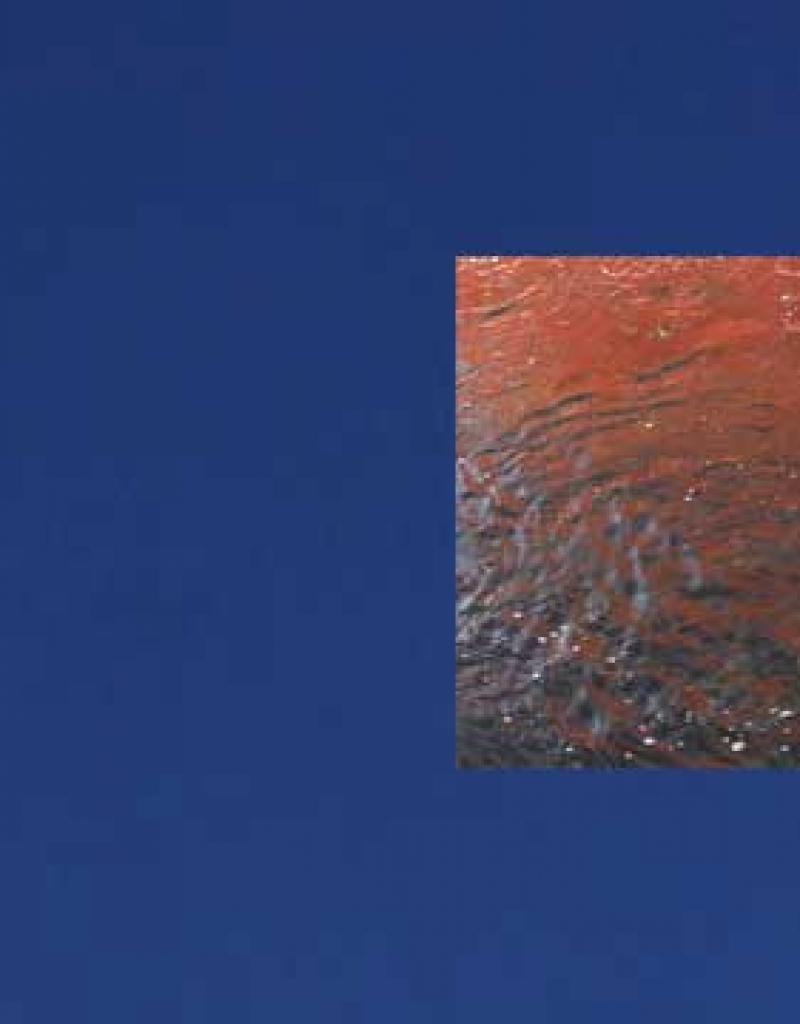
Paradigms of Structure and Change: David Carlson
March 11 – April 23, 2017
Working with the unique qualities of painting, drawing, and video, David Carlson engages the poetics of geometry and design through the collision of gestural lines, rounded forms, and layered imagery. Spanning over several years, the bodies of work featured in Paradigms of Structure and Change are in conversation with one another as investigations into the importance of experience and reflection within the process of intuitive creation. Khadija Adell, Curator
paintings | video | artist’s talk | david carlson
paintings
video
One year, one month, one week, one day, one hour, one minute.
Through the act of abstract painting I merge time and energy into compositions that reflect unknown circumstance. This is important. I begin with a simple group of thoughts or perimeters that initiate the overall concept. (platform.) Totemic force, unidentified object, nature, music, poetry, diverse cultural experiences through travel define the process. Mine is not to dissect and explain but to experience and reflect.
Each painting has it’s own duration and this perception is automatically built into it through the process of exploration. This is something I have been working and struggling with for many years.
In my studio I ask myself, “What is the nature of reality?” This is my constant thought while I paint. The tension between opposing paradigms of structure and change continually challenge me to look for different ways to understand this question. By using abstraction, my paintings have an undertone of geometry, I use the word poetically. The aesthetic includes a painterly approach, precision handling and an underlying sense of design through collision, tension and opposition.
On the surface, there are recognizable shapes, mostly circles, but also rounded forms and lines that create movement and structure in the space. The physical nature of circles become fixed in space between the more gestural lines and layers that create movement and a sense of time. The painting’s layered surface include heavy texture, scraped areas, fresh paint and milky veils, which allude to the formation or destruction of random sequence. Without having specific objects or trappings of identifiable ‘real’ images, the paintings cross over perceptible boundaries locked to a specific meaning. This allows me to look directly at diverse ideas in an intuitive manner. The act of painting becomes the experience or ‘reality’ for the basis of the work. By combining abstract painting with concepts rooted in Taoist and Buddhist philosophy I have been constructing contemporary works that directly express the ever-changing quality of experience, time, and place. Zen
